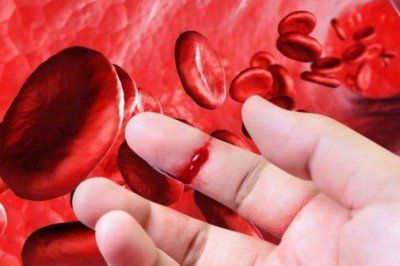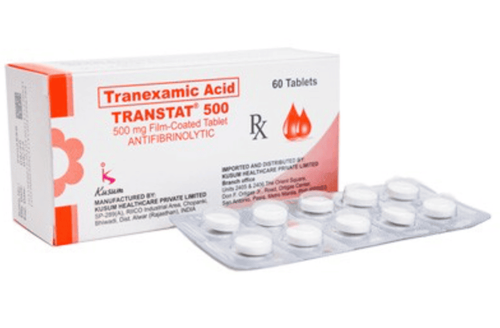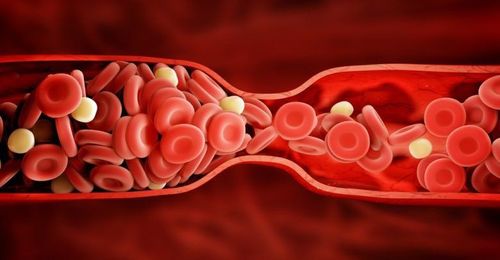This is an automatically translated article.
Gone are the days when a diagnosis of hemophilia meant you couldn't live a normal life. Now, there are more treatments approved by the Food and Drug Administration (FDA) that help people with this condition have better control of bleeding.1. Hemophilia
Hemophilia is a rare bleeding disorder. The disease is usually hereditary but in rare cases it can be acquired if a person's body develops antibodies that attack the clotting factors in the blood. Hereditary hemophilia is common in men and currently affects about 23,500 Americans. According to the World Federation of Hemophilia (WFH), about one in 10,000 people has the disease.There are 13 types of clotting factors and these work with platelets to help the blood clot when there is bleeding. People with hemophilia are missing one or more important clotting factors, which are proteins needed for blood clotting. Several types of clotting factors exist, and there are two main types of hemophilia, said Nisha Jain, chief of the Clinical Evaluation Branch in the FDA's Office of Blood Evaluation and Research.
Hemophilia A occurs when a person has low levels or a lack of clotting factor VIII. Hemophilia B occurs when a person has low or low clotting factor IX. In addition to the two main types mentioned above, there is also a mild form of factor XI deficiency called Hemophilia C. People with this rare type of hemophilia do not usually experience spontaneous bleeding. Bleeding usually occurs after trauma or surgery.
People with hemophilia may bleed for a longer time than others after an injury or surgery. They may also have internal bleeding; especially in the knees, ankles and elbows, this can damage their organs and tissues, even life-threatening.

Bệnh máu khó đông thường có nguyên nhân từ di truyền.
2. Symptoms of hemophilia
Symptoms of hemophilia depend on the severity of your clotting factor deficiency. People with a mild deficiency may experience bleeding in the event of an injury. People with a severe deficiency may bleed for no reason. This is called “spontaneous bleeding”. In children with hemophilia, these symptoms can occur around age 2.Spontaneous bleeding can cause the following conditions:
Blood in the urine . There is blood in the stool. Deep bruises. Large bruises of unknown cause. Bleeding too much. Bleeding gums. Frequent nosebleeds. Pain in the joints. Irritability in children.
3. When should you see a doctor?
The following symptoms are an emergency of hemophilia. You should get immediate treatment for any of the following symptoms:Severe headache. Vomiting continuously. Neck pain. Blurred or double vision. Extreme sleepiness. Continuous bleeding due to trauma. If you're pregnant, it's important to see your doctor if you experience any of the symptoms above.
4. How is hemophilia diagnosed?
Hemophilia is diagnosed through blood tests. Your doctor will remove a small sample of blood from your vein and measure the amount of clotting factor present. The sample is then graded to determine the severity of the clotting factor deficiency:Mild hemophilia manifested by plasma clotting factors between 5 and 40%. Moderate hemophilia is represented by a plasma clotting factor of 1 to 5%. Severe hemophilia is indicated by a plasma clotting factor less than 1%.
5. Treatment methods for hemophilia
Currently, hemophilia cannot be cured, but treatments have come a long way.Hemophilia is sometimes called "Royal Disease" because it affected the British royal family in the 1800s. By the 1960s, hemophilia was treated with whole blood or fresh plasma. But these treatments don't have enough factor VIII or IX proteins to prevent serious internal bleeding.
Currently, the main treatment for hemophilia is replacement therapy: Levels of clotting factor VIII (for hemophilia A) or clotting factor IX (for hemophilia B) are injected into the patient's vein to replace missing or low concentrations of elements.
These concentrates are traditionally made from human blood. Today, these are made using recombinant DNA technology (a form of man-made DNA), and some are made without any materials of human or animal origin. The final product is a powder that is mixed with sterile water before use.
Treatment methods and frequency of treatment vary depending on the severity of the hemophilia; can be classified as mild, moderate or severe. People with mild hemophilia have between 6% and 49% of normal levels of clotting factors in their blood. They usually only have bleeding problems after serious trauma or surgery.
People with hemophilia on average, about 15% of all people with hemophilia, have between 1% and 5% of normal clotting factor levels. They may have bleeding problems after an injury and spontaneously. People with severe hemophilia make up about 60% of all hemophilia patients, with normal clotting factor levels less than 1%. They bleed after an injury and may have frequent spontaneous bleeding, including bleeding into joints and muscles. In addition to clotting factor replacement, pain medication and physical therapy are also used to reduce pain and swelling if the joint is bleeding.
Patients with mild and moderate severity rarely need treatment. In certain situations; For example, before dental work, patients with mild hemophilia receive Desmopressin (DDAVP), a man-made hormone that increases the level of clotting factor in the blood. Meanwhile, patients with severe hemophilia are the ones who really need treatment to prevent or resolve the bleeding.

Điều trị bệnh máu khó đông còn phụ thuộc vào mức độ nặng nhẹ của bệnh.
6. A shift towards hemophilia prevention
Doctors, especially hematologists who specialize in the study of blood, tend to identify people with severe hemophilia early. The patient can be diagnosed as an infant when circumcised. The family can then work with hematologists and hematology centers.In recent times, doctors have turned to bleeding prevention. You want to stop the bleeding that causes joint damage, but once joint damage begins, it is difficult to stop progression unless the bleeding into the joint is reduced.
Treatments for hemophilia continue to improve and the FDA has approved many surrogate factors in recent years. For example, in March 2014, they approved Alprolix, the first hemophilia B treatment created to give patients less treatment when used to prevent or reduce the frequency of bleeding.
Recently, the FDA also approved Rixubis - a factor IX product - to control, prevent, and reduce bleeding associated with Hemophilia B. The agency also approved Novoeight, a factor VIII product, For bleeding control and routine prophylaxis for adults, adolescents, and children with Hemophilia A.
Today, due to enhanced FDA surveillance and protections, these products are safe. more completely than before. Patients should be informed of the various treatment options and should consult their physician to obtain a comprehensive management plan and to adhere to it. With proper treatment and care, people with hemophilia can live normal lives.
However, hemophilia is a disease that inconveniences the patient's life and is difficult to cure. Therefore, when you see any signs of the disease in your body, you need to immediately go to reputable medical facilities to be examined, diagnosed, perform blood tests for hemophilia and treat the disease as soon as possible. as possible, to avoid dangerous complications later.
Please dial HOTLINE for more information or register for an appointment HERE. Download MyVinmec app to make appointments faster and to manage your bookings easily.
References: fda.gov, healthline.com












